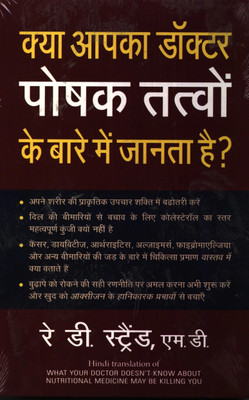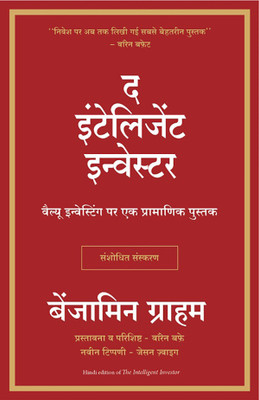
Get notified when this item comes back in stock.
NTA CSIR UGC NET/SET (JRF & Lecturership) Life Sciences (Paperback, Ashish Nagesh, Quaisher J. Hossain, Prashant Kumar)
Share
NTA CSIR UGC NET/SET (JRF & Lecturership) Life Sciences (Paperback, Ashish Nagesh, Quaisher J. Hossain, Prashant Kumar)
4.4
103 Ratings & 5 ReviewsSpecial price
₹729
₹990
26% off
Sold Out
This item is currently out of stock
Highlights
- Binding: Paperback
- Publisher: Arihant Publications India Limited
- Genre: Entrance Exams Preparation
- ISBN: 9789311009414
- Edition: 2023
Seller
Description
For the preparation of any National-Level Exam, including the CSIR UGC NET Exam, an aspirant must
prepare strategically along with covering the entire syllabus.
''NTA CSIR UGC NET/SET � LIFE SCIENCES'' has been revised and updated with all the necessary tools &
techniques which will assure your success in the exam. This book gives complete syllabus coverage in a
chapterwise manner to grasp the basics of concepts. In each chapter, the theories are complete,
exhaustive and exactly on the lines of exam pattern & difficulty level. Apart from theoretical concepts, a
proper focus has been provided to practice part with a sufficient number of MCQs to students. Sample
Questions and Previous Years Solved Papers will give you insights into the previous exam pattern as
well. This book includes:
1. All-inclusive study and practice tool for NTA CSIR UGC NET/SET
2. All units are divided into individual chapters with MCQs
3. Coverage of all types of MCQs
4. Includes solutions to Sample Questions provided on the CSIR website
5. Solved papers (2016-2022) to examine the exam pattern
TABLE OF CONTENT:
UNIT 1: Basic Physical and Chemical concepts in Biology, Bioenergetics and Catalysis, Organization and
Metabolism of Biomolecules, UNIT 2: The Cell: Structure and Function, Structure of Chromosome and
Cell Cycle, UNIT 3: DNA Replication, Repair and Recombination, RNA Synthesis and Processing, Protein
Synthesis and Processing, Control of Gene Expression, UNIT 4: Host-Parasite Interactions, Cell Signaling
and Cellular Communication, Cancer, UNIT 5: Immune System, Concepts and Early Development in
Plants and Animals, UNIT 6: Morphogenesis and Organogenesis in Plants and Animals, Physiological
Metabolism in Plants, Growth Hormone and Photobiology, UNIT 7: Solute Transport and Stress
Physiology, Digestion and Respiratory System, Blood Vascular System, Excretory System and
Thermoregulation, Neuroendocrine System and Reproduction, UNIT 8: Mendelism and its Extensions,
Gene Mapping, Extrachromosomal Inheritance and Microbial Genetics, Human and Quantitative
Genetics, Genetic Variation, UNIT 9: Classification of Livings, Indian Sub-Continent and its Organisms,
UNIT 10: The Environment and Population, Community Dynamics, Ecosystem Physiology, Pollution and
Biodiversity Conservation, UNIT 11: Origin of Life and Evolutionary Thoughts, Evolution: Methods of
Studying and Mechanisms, Behaviour and Evolution, UNIT 12: Applied Biology, UNIT 13: Molecular
Biology and Recombinant DNA method, Histochemical and Immunotechniques, Biophysical Methods,
Statistical Methods, Radiolabelling Techniques, Microscopic Techniques, Electrophysiological Methods,
Methods in Field Biology, Computational Methods, Sample Questions Provided on CSIR website, Solved
Papers (2016, 2017, 2018, 2019, 2021, 2022)
Read More
Specifications
Book Details
| Publication Year |
|
| Number of Pages |
|
Contributors
| Authored By |
|
Ratings & Reviews
4.4
★
103 Ratings &
5 Reviews
- 5★
- 4★
- 3★
- 2★
- 1★
- 63
- 27
- 5
- 4
- 4
5
Perfect product!
Nice one for everyone. It has a complete csir net lifescience syallabus. From my point of view it's good choice for everyone👍
READ MOREAnilkumar Boya
Certified Buyer, Gadwal
Feb, 2024
3
0
Report Abuse
5
Perfect product!
Best for NET life Science
READ MORESubhendu Keora
Certified Buyer, Raghunathpur Puruliya District
10 months ago
1
0
Report Abuse
5
Just wow!
Book is of fresh quality, got it delivered right on time.
READ MOREAnaiza Aftab
Certified Buyer, Bhopal
Dec, 2023
1
0
Report Abuse
5
Simply awesome
Excellent book
READ MOREFlipkart Customer
Certified Buyer, Karimnagar
Sep, 2023
1
0
Report Abuse
2
Slightly disappointed
The book was good but so many pages were not seen.. really disappointed
READ MORENetra D
Certified Buyer, Koppal District
Nov, 2024
0
0
Report Abuse
+
All 5 reviews
Be the first to ask about this product
Safe and Secure Payments.Easy returns.100% Authentic products.
Back to top







